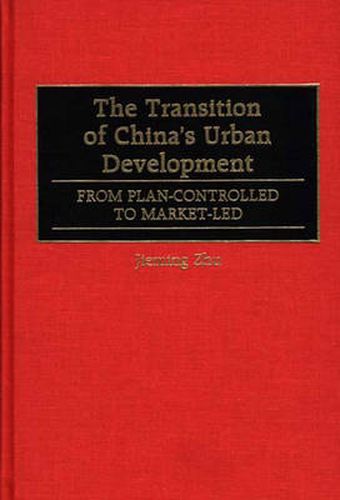Readings Newsletter
Become a Readings Member to make your shopping experience even easier.
Sign in or sign up for free!
You’re not far away from qualifying for FREE standard shipping within Australia
You’ve qualified for FREE standard shipping within Australia
The cart is loading…






From 1949 to today, China has experienced dramatic changes in its economy and urban development. This book examines these changes and looks at one city, Shenzhen, in detail. The performance and behavior of a fledgling property market in the transitional economy are analyzed in the backdrop of real estate commodification and marketization. Students and researchers in urban geography, urban planning, economics, business, and real estate will find this monograph lucid and original.
Two distinctive periods divide the last fifty years of development in China. The period 1949 to 1978 was dominated by central planning. After 1978, however, economic reforms brought a new property market to many of China’s cities. The economic surge of this period has transformed these cities and helped create new metropolises. The special economic zone of Shenzhen grew from what was, until 1980, a landscape predominantly made up of rice paddy fields and traditional villages. By 1995, the population of the city grew to more than two and a half million. Two modes of land provision are identified as the main contributors to Shenzhen’s urban development process, which is also echoed in other Chinese cities. Incremental urban land reforms are elaborated within a broad framework of institutional change, while marketization has brought many changes to Chinese society. Continued urban reform toward a market economy seems now irreversible.
$9.00 standard shipping within Australia
FREE standard shipping within Australia for orders over $100.00
Express & International shipping calculated at checkout
From 1949 to today, China has experienced dramatic changes in its economy and urban development. This book examines these changes and looks at one city, Shenzhen, in detail. The performance and behavior of a fledgling property market in the transitional economy are analyzed in the backdrop of real estate commodification and marketization. Students and researchers in urban geography, urban planning, economics, business, and real estate will find this monograph lucid and original.
Two distinctive periods divide the last fifty years of development in China. The period 1949 to 1978 was dominated by central planning. After 1978, however, economic reforms brought a new property market to many of China’s cities. The economic surge of this period has transformed these cities and helped create new metropolises. The special economic zone of Shenzhen grew from what was, until 1980, a landscape predominantly made up of rice paddy fields and traditional villages. By 1995, the population of the city grew to more than two and a half million. Two modes of land provision are identified as the main contributors to Shenzhen’s urban development process, which is also echoed in other Chinese cities. Incremental urban land reforms are elaborated within a broad framework of institutional change, while marketization has brought many changes to Chinese society. Continued urban reform toward a market economy seems now irreversible.